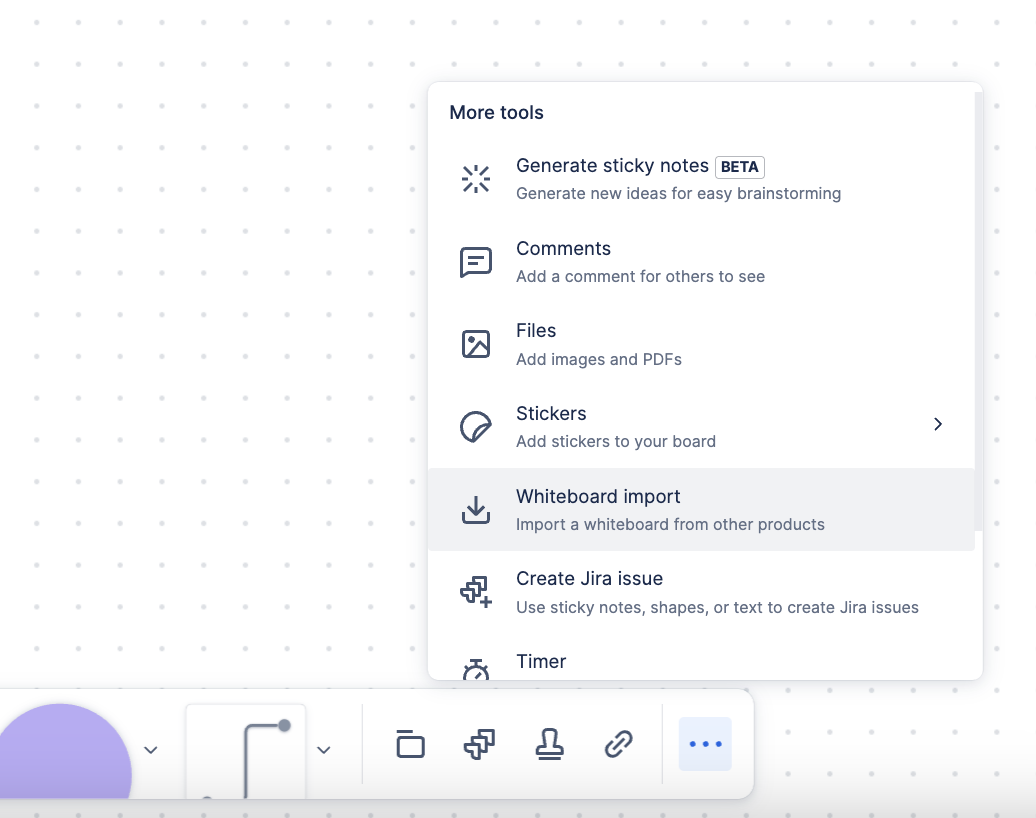Import Figjam boards in Confluence whiteboards
Whiteboards aren’t available in Atlassian Government environments.
Bring your Figjam content to Confluence whiteboards and collaborate seamlessly with your team. Import your whiteboards from Figjam into Confluence to unlock features like smart connectors, smart sections, real-time editing, and experience brainstorming and collaboration like never before. Plus, keep everything organized with your whiteboards conveniently stored alongside your other Confluence content.
Export your Figjam board
In Figjam, open the board you wish to export.
Select the Main menu icon in the top-left corner, then select File > Export As.
In the Export dialog, select from PNG, JPG, or PDF.
If exporting as PNG or JPG, select a Background option (Transparent, Solid, or Grid).
For the Export area, you can select the entire board, or Selection only.
Select the Export button.
Select a location to save the file.
For more information on exporting Figjam boards, see the Figma support documentation.
Import to whiteboards
Whiteboards currently only support PDF or image file importing.

Navigate to the whiteboard where you wish to import the image or PDF. You can use an existing whiteboard or start a new one.
You can import your content in two ways:
Drag your image or file into your whiteboard.
On the toolbar, select the More menu ( … ), select Whiteboard import, navigate to your file, and select it.
Select your content type.
The import process will complete.
When should I recreate my content in Confluence whiteboards vs. uploading a static image?
For projects that are still in progress and continue to be iterated on, we recommend importing as an image and recreating the areas that require additional editing and changes.
For projects that are completed, but may need to be referenced in the future, we recommend importing as an image. The content will then live in Confluence whiteboards as the new source of record.
Limitations
Some limitations and differences between your FigJam board and Confluence whiteboard will occur.
Importing comments is not supported, but you can comment on Confluence whiteboards.
Colors will be mapped to the closest Confluence whiteboards colors.
Connectors will not import, but they can be recreated in Confluence whiteboards.
Rotated elements will import unrotated.
Shapes supported in whiteboards will import as shapes. Shapes that are not supported will import as images.
Locked elements will not remain locked when imported, but you can manually lock them in Confluence whiteboards.
Talk tracks are not supported in whiteboards.
Whiteboards have a 10,000 element limit.
Importing may take longer than a minute for boards with many elements, large images, or a lot of content.
Was this helpful?